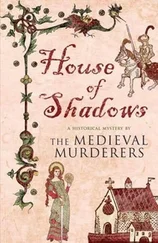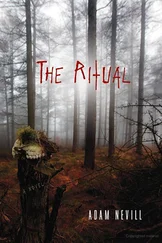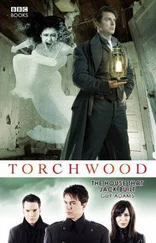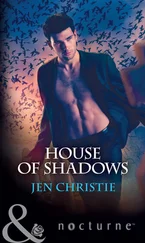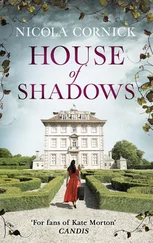In a separate envelope, the disabled boy reappeared as the subject of two further photographs. This time none of the Mason family were in shot, though the little boy was not alone. Because it appeared that one of Mason’s troupe of marionettes had joined him for a photographic opportunity.
‘No.’ Catherine wanted to unsee the figure perched upon the disabled boy’s lap in the manner of an ancient ventriloquist’s dummy.
The puppet was almost the same size as the boy, its callipered legs at least as long and thin. But what was most striking about the puppet in the little tight suit was its wooden face and long black hair.
She’d seen this odd and scruffy thing before, in her own childhood trances, at her school that one time in the playground, and outside of her den on the other side of the green fence that Alice had climbed through… Which would mean her trances were memories? Albeit repressed, but true recollections?
Catherine hung her head between her shoulders and took long deep breaths to try and stop the shaking that had come to her limbs.
But Mason was long dead when she was a child, had been gone twenty years. Violet would have been dead by then too, or extremely aged. So had Edith, Maude, or their collaborators, brought this troupe to the derelict Magnis Burrow School, and into her life when she was a six-year-old child?
And if the figure with the wooden face and callipered legs, that Catherine had seen when she was a child, was no hallucination — it couldn’t have been — the figure could not have been a puppet either, because when she had seen it, there had been no puppeteer.
The thing with the wooden face must have been an actual child then, wearing a mask and dressed as one of Mason’s puppets.
But if a costumed child had been at the Red House in the 1940s, to be photographed with the disabled boy in the wheelchair, then who had worn the same outfit in the early eighties, when she had seen the figure with her own immature, six-year-old eyes?
Had she caught a glimpse of a similar figure, right here, in the nursery, too? There had been a mostly concealed head with that kind of wig. She had seen its messy black curls, but no face. She wondered if it had featured in the BBC film of Henry Strader’s execution; she couldn’t be sure, as the puppets had been in period costume, and she’d kept covering her eyes.
‘You sick, sick fucks.’ A terrible suggestion arrested her mind, which still felt like it was swimming with drugs and aching from trying to process so much unpleasant imagery and information. But had the Mason family snatched all of the little disabled children from the Magnis Burrow School in Ellyll Fields in the fifties and sixties? Had the Masons been befriending lonely and disabled children in that school with a patsy: a costumed, masked go-between? Perhaps using other children dressed as Mason’s beloved troupe of marionettes to function as mimics, as saviours to the defenceless and vulnerable? The disabled boy in the wheelchair might have been just such an abductee, maybe one of the first in the forties.
In her trances, Catherine had seen what she’d thought of as strange children within the buildings of Magnis Burrow, as Alice had climbed the grassy bank leading up to the school. She hadn’t imagined it. She wasn’t crazy. Here was proof. And her trances may have been submerged traumas. Her contact, or her reunion, with the Red House must have brought the memories back with force. There was a connection.
If two generations of Masons had been haunting that school for decades, they would have taken Alice. And would have wanted Catherine too.
But then who were the children disguised in the marionette costumes? Other abducted children? Vulnerable children groomed, recruited, and then made to star in the sick plays of the Mason family, upon their lawn, for years? And to lure others to the party at the Red House? Alice too?
Alice…
If her suspicions were true, no wonder the Masons were still hiding from the world. Which begged another question she wanted the answer to: was Edith really broke and looking to sell up, or was she confessing to Catherine? Or doing something much worse? Now that Catherine was a woman, who had once been the child that got away, because she hadn’t followed Alice through the fence, was Edith Mason hoping to resolve unfinished business? It was possible.
‘Oh God, oh God.’ Had they come back for her, these two horrid old women, to finish the child-snatching work that M. H. Mason had started decades before she’d even been born?
Had she not seen a child in the Red House too, at the window, on her first visit? Or was that a doll? Someone had pressed a doll’s face against the window when she was returning from the hives too. Maybe that wasn’t a doll and there was actually a child or children here.
The locked attic! A cellar! What had really been in those nursery beds? The movements at night. A small figure standing up at the end of a dark corridor… What she had thought was a trick, or an animal.
Catherine clutched her face with her hands. She felt weak, woozy, wanted to throw up all over Mason’s hideous study. It was preposterous. She didn’t know what to think. Maybe it was her that was truly mad, eaten alive by paranoia, and she was only rationalizing her presence within this building, as well as its very connection to what had always been dismissed as her childhood hallucinations. The worst thing about being mad was not realizing that you were mad.
Evidence, she needed more evidence.
Those few scrolls of parchment she still had the stomach to take down from the honeycomb of boxes in the study, and to untie, were all written in what she thought was ancient Greek. As were the bound volumes of Mason’s black notebooks that filled a small bookcase. Same again with the four upon the desk he had filled with writing right up until his death. The neat but incomprehensible text was only ever relieved by chemical compositions, and what looked like trigonometry.
The M. H. Mason legacy didn’t need a valuer or an auction, it needed a psychiatrist, and a secure archive within a private hospital, where the monomania that his niece had mistaken for genius could be studied at length by those accustomed to the sophisticated expressions of the incurably damaged.
Catherine ran back to her room and grabbed her bags. Then made her way down to the ground floor with her car keys clenched between her teeth.
Before Catherine moved any further from her car, she tried to identify the source of the dim, coppery illumination at street level in the village of Magbar Wood. The light appeared to originate from within the houses, which barely qualified as silhouettes, bordering the two streets that formed the entire village. The faint glow seemed to emit from weak bulbs, screened behind the net curtains and grubby windows she’d seen during her last visit.
The light barely touched those gathered for the pageant, and only occasionally made the jerky suggestions of a crowd visible. But a bustle was evident down there, a milling of shapes, though there were no raised or excited voices.
She guessed that around a score of people were scattered along the visible portion of the two lanes, moving between the flat facades of the stone cottages. Buildings she was certain were near deserted during her last trip.
From where the crowd had gathered was a mystery. It seemed impossible those assembled were indigenous to this place due to its state of dereliction. If they had travelled from neighbouring locales to celebrate the memory of M. H. Mason, then she could only assume they were privy to a secret tradition, and also mad.
A candy-striped pole of metal blocked the narrow road that led into the village. Hidden within the hedgerow on either side of the lane, her desperate hands had just passed over two stone bollards upon which the pole was chained in place. She would get no further by car.
Читать дальше

